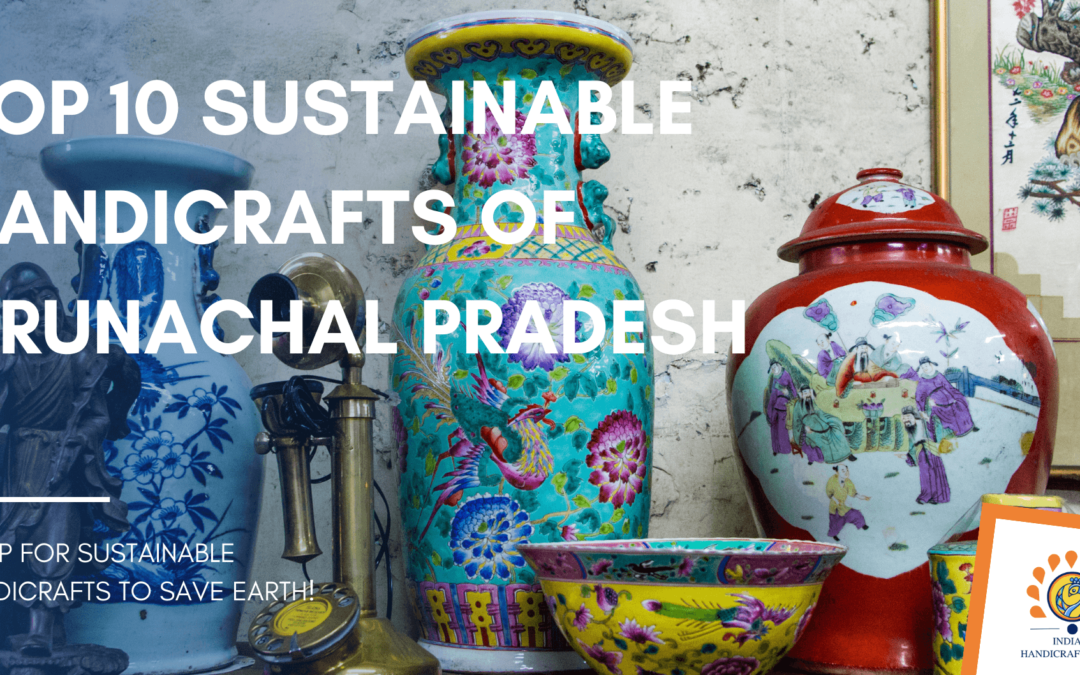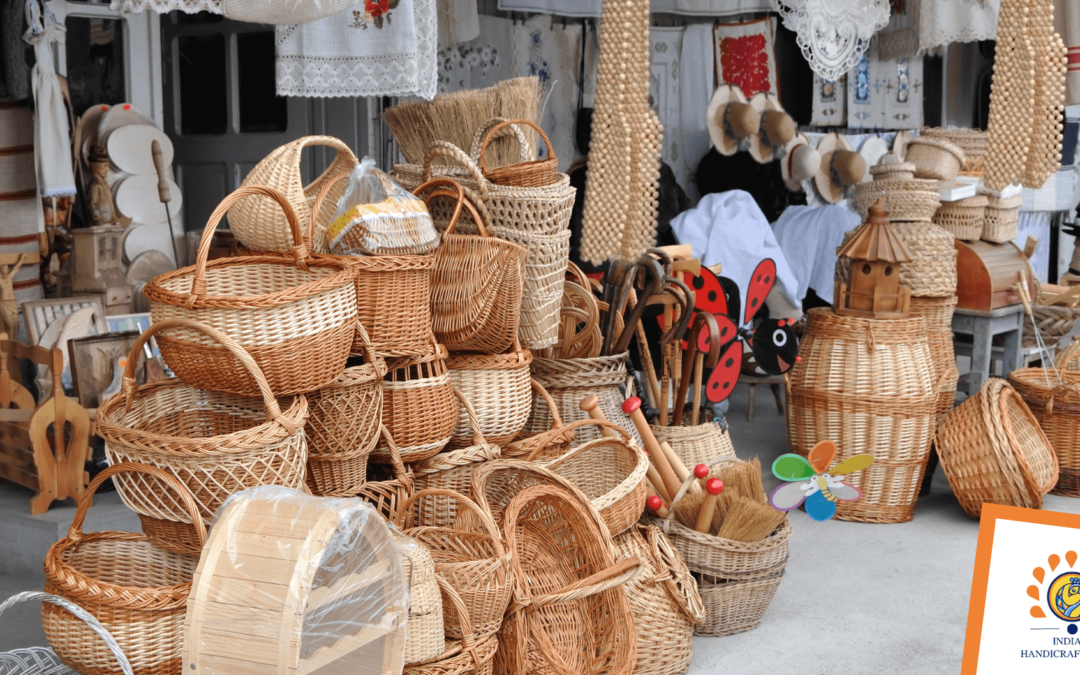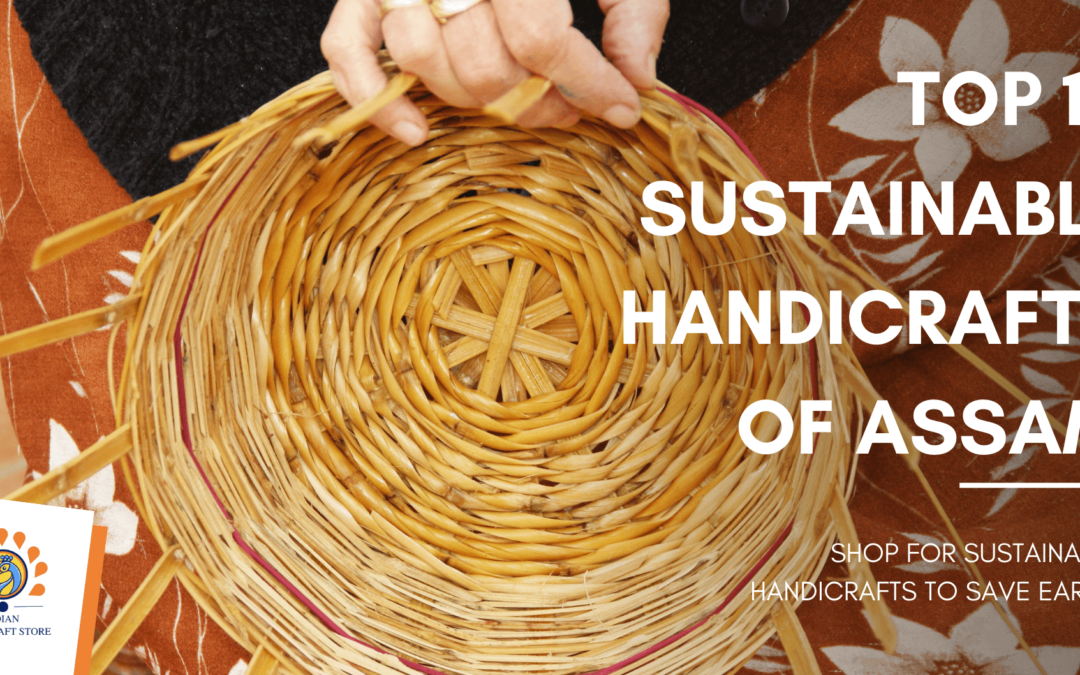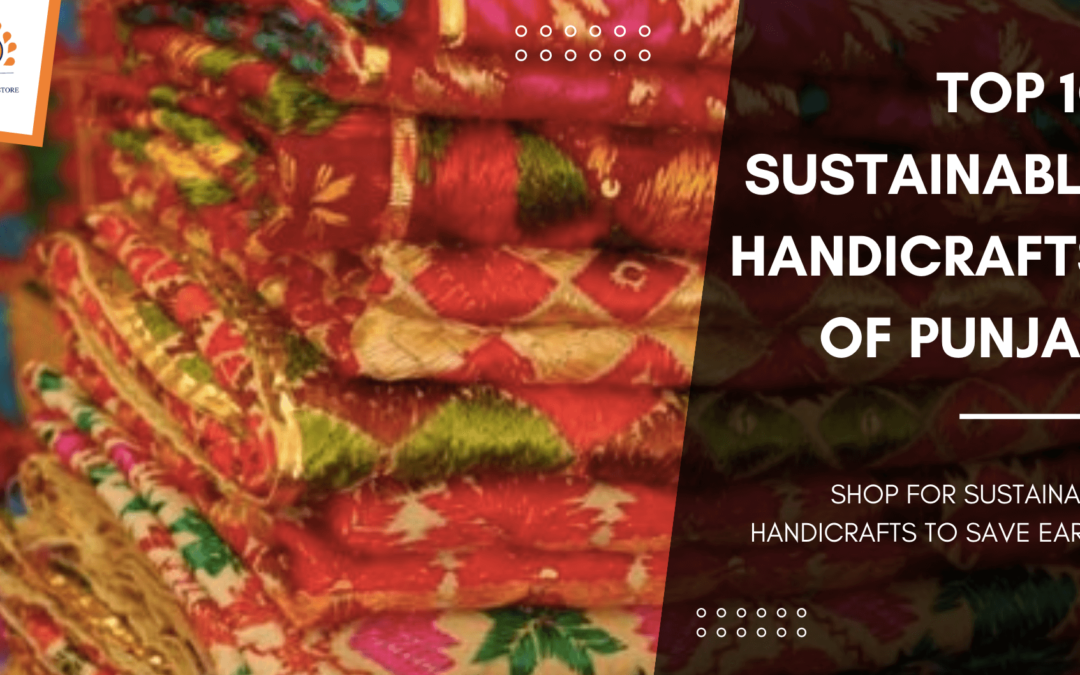No Results Found
The page you requested could not be found. Try refining your search, or use the navigation above to locate the post.

Cane and Bamboo Handicrafts – Arunachal Pradesh is known for its beautiful cane and bamboo handicrafts that are sustainably produced using locally sourced materials. These handicrafts include baskets, furniture, and even musical instruments.
Wood Carvings – Arunachal Pradesh has a rich tradition of wood carvings that are created using sustainable techniques and locally sourced wood. These carvings are often used to decorate homes, temples, and other buildings.
Traditional Weaving – The state is known for its traditional weaving, which is sustainably produced using locally sourced materials such as cotton, wool, and silk. These textiles are used for a variety of purposes, including clothing, home decor, and ceremonial dress.
Thangka Paintings – Thangka paintings are a traditional handicraft of Arunachal Pradesh that involve painting on silk or cotton fabric. These paintings often depict religious figures or scenes and are sustainably produced using natural dyes.
Prayer Flags – Prayer flags are a traditional handicraft of Arunachal Pradesh that are sustainably produced using natural materials such as cotton, silk, and bamboo. These flags are often hung outside homes and temples to promote peace and harmony.
Brass Handicrafts – Brass handicrafts are sustainably produced using locally sourced brass and traditional techniques. These handicrafts include lamps, candle stands, and other home decor items.
Cane Hats – Cane hats are a traditional handicraft of Arunachal Pradesh that are sustainably produced using locally sourced cane. These hats are woven by skilled artisans and are known for their durability and protection from the sun and rain.
Mithun Horn Handicrafts – Mithun is a type of cattle that is found in Arunachal Pradesh, and its horns are often used to create sustainable handicrafts such as bowls and cups.
Pottery – Pottery is a traditional handicraft of Arunachal Pradesh that involves creating earthenware using sustainable techniques and locally sourced materials. The pottery is fired using traditional kilns, and the finished products are known for their durability and unique designs.
Rattan Handicrafts – Rattan is a type of climbing palm that is abundant in Arunachal Pradesh, and it is often used to create sustainable handicrafts such as baskets and furniture.
Arunachal Pradesh is a state that is rich in sustainable handicrafts. The state’s artisans use locally sourced materials and traditional techniques to create beautiful and eco-friendly handicrafts that support local communities and traditions. From cane and bamboo handicrafts to thangka paintings, there’s a wide variety of sustainable handicrafts to discover in this state.
The page you requested could not be found. Try refining your search, or use the navigation above to locate the post.

Naga Shawls – Naga shawls are a traditional handicraft of Nagaland that are sustainably produced using locally sourced materials such as cotton, silk, and wool. These shawls are handwoven by skilled artisans using traditional techniques and natural dyes, and they are known for their intricate designs and vibrant colors.
Naga Jewellery – Naga jewellery is a unique and sustainable handicraft that is made using materials such as beads, bones, and horns. These materials are sourced from local animals, and the jewellery is handcrafted by skilled artisans using traditional techniques.
Wood Carvings – Nagaland is known for its intricate wood carvings that are created using sustainable techniques and locally sourced wood. These carvings are made by skilled artisans and are often used to decorate homes, temples, and other buildings.
Bamboo and Cane Handicrafts – Bamboo and cane are abundant in Nagaland, and many artisans use these materials to create a wide range of sustainable handicrafts. These include baskets, furniture, and even musical instruments.
Naga Textiles – Naga textiles are sustainably produced using locally sourced materials and traditional techniques. These textiles are known for their vibrant colors and intricate designs, and they are used for a variety of purposes, including clothing, home decor, and ceremonial dress.
Hornbill Crafts – The Hornbill Festival is a celebration of Nagaland’s culture and tradition, and many artisans showcase their sustainable handicrafts at this festival. These crafts include woven baskets, wooden carvings, and Naga jewellery.
Pottery – Pottery is a traditional handicraft of Nagaland that involves creating earthenware using sustainable techniques and locally sourced materials. The pottery is fired using traditional kilns, and the finished products are known for their durability and unique designs.
Naga Spears and Shields – Naga spears and shields are traditional weapons that are sustainably produced using locally sourced wood and other materials. These weapons are used in traditional dances and ceremonies and are known for their intricate designs and durability.
Naga Hats – Naga hats are traditional headgear that are sustainably produced using locally sourced materials, including bamboo and cane. These hats are woven by skilled artisans using traditional techniques, and they are known for their durability and protection from the sun and rain.
Naga Beadwork – Naga beadwork is a traditional handicraft that is made using sustainable techniques and locally sourced materials such as beads, shells, and bones. These beadworks are used to decorate clothing, jewellery, and other items, and they are known for their intricate designs and vibrant colors.
Nagaland is a state that is rich in sustainable handicrafts. From handwoven shawls to wood carvings, there’s a wide variety of eco-friendly handicrafts to discover in the state. The artisans of Nagaland have a deep respect for the environment and use locally sourced materials and traditional techniques to create beautiful and sustainable handicrafts that support local communities and traditions.
The page you requested could not be found. Try refining your search, or use the navigation above to locate the post.

Here are the top 10 sustainable handicrafts of Meghalaya:
Khasi Jainsi – Khasi Jainsi is a traditional Meghalayan fabric made from locally sourced cotton. The fabric is handwoven by skilled artisans using traditional techniques and natural dyes. Khasi Jainsi is known for its durability, comfort, and eco-friendliness.
Cane and Bamboo Handicrafts – Cane and bamboo are abundant in Meghalaya, and many artisans use these materials to create a wide range of handicrafts. These include baskets, mats, furniture, and even musical instruments. These handicrafts are sustainable because cane and bamboo are fast-growing and renewable resources.
Meghalaya Shawls – Meghalaya is famous for its handwoven shawls, which are made using a combination of cotton and silk. These shawls are sustainably produced using locally sourced materials and traditional techniques, and they are known for their vibrant colors and intricate designs.
Meghalaya Carpets – Meghalaya carpets are handwoven using locally sourced wool and natural dyes. The carpets are known for their intricate designs and durability, and they are a sustainable alternative to machine-made carpets that are often produced using synthetic materials.
Ka Jiliat Khlain – Ka Jiliat Khlain is a traditional Meghalayan cane hat worn by men. These hats are sustainably produced using locally sourced cane and are woven by skilled artisans using traditional techniques. They are known for their durability and protection from the sun and rain.
Black Pottery – Black pottery is a traditional handicraft of Meghalaya that involves creating earthenware using a unique firing process that results in a black color. The clay used to create these pots is sourced locally, and the firing process does not require electricity or fuel, making it a sustainable alternative to industrial pottery.
Naga Hats – Naga hats are traditional headgear worn by men in Meghalaya. These hats are sustainably produced using locally sourced materials, including bamboo and cane. They are known for their durability and ability to protect the wearer from the sun and rain.
Knitwear – Knitting is a traditional handicraft in Meghalaya, and many artisans produce eco-friendly knitwear using locally sourced wool. The wool is shorn from sheep raised by local farmers, and the knitting is done by hand, making these products sustainable and eco-friendly.
Tlieng – Tlieng is a traditional Meghalayan mat made from locally sourced materials. The mats are woven by hand using traditional techniques, and they are known for their durability and versatility. They can be used as floor coverings, wall hangings, or even as seating mats.
War Jaintia – War Jaintia is a traditional Meghalayan wooden shield that is sustainably produced using locally sourced wood. These shields are used in traditional dance performances and are known for their intricate designs and durability.
Meghalaya is a treasure trove of sustainable handicrafts. From handwoven shawls to black pottery, there’s a wide variety of eco-friendly handicrafts to discover in the state. The artisans of Meghalaya have a deep respect for the environment and use locally sourced materials and traditional techniques to create beautiful and sustainable handicrafts that support local communities and traditions.
The page you requested could not be found. Try refining your search, or use the navigation above to locate the post.

Muga Silk – Muga silk is a unique type of silk produced only in Assam. The silk is sustainably produced, as the silkworms are allowed to complete their natural life cycle and are not killed in the process. Muga silk is known for its lustrous sheen and durability.
Bamboo Handicrafts – Bamboo is a versatile material that is abundant in Assam. Many artisans in the state use bamboo to create a wide range of handicrafts, including baskets, mats, and furniture. Bamboo is a sustainable material because it is fast-growing and renewable.
Cane Handicrafts – Cane is another sustainable material that is widely used by artisans in Assam. Cane handicrafts include items like baskets, trays, and furniture. Cane is a fast-growing material that can be harvested sustainably without damaging the environment.
Bell Metal Crafts – Bell metal is an alloy of copper and tin that is commonly used to create traditional utensils and crafts in Assam. The metal is sustainably sourced and can be recycled, making it an eco-friendly material.
Eri Silk – Eri silk is another type of silk produced in Assam. The silk is sustainably produced, as the silkworms are not killed during the production process. Eri silk is known for its warmth and durability and is often used to create shawls, scarves, and other clothing items.
Gamusa – Gamusa is a traditional cotton cloth that is widely used in Assam. The cloth is sustainably produced using organic cotton and natural dyes. Gamusa is often used as a towel, scarf, or handkerchief.
Brass Handicrafts – Brass is a sustainable material that is widely used by artisans in Assam to create a wide range of handicrafts, including utensils, jewelry, and home decor items. Brass is a durable and recyclable material that can be sustainably sourced.
Xorai – Xorai is a traditional Assamese bell metal offering tray that is used during religious ceremonies and festivals. The tray is sustainably produced using locally sourced materials and traditional techniques.
Pottery – Pottery is a traditional handicraft of Assam that involves creating clay pots and other objects using a pottery wheel. The clay used to create the pottery is sustainably sourced from the riverbeds of Assam.
Mishing Weaving – The Mishing community in Assam is known for its intricate weaving techniques. The weavers use locally sourced materials like cotton and silk to create beautiful textiles using traditional techniques.
Assam is a treasure trove of sustainable handicrafts. From Muga silk to bamboo handicrafts, there’s a wide variety of eco-friendly handicrafts to discover in the state. The artisans of Assam have a deep respect for the environment and use locally sourced materials and traditional techniques to create beautiful and sustainable handicrafts that support local communities and traditions.
The page you requested could not be found. Try refining your search, or use the navigation above to locate the post.

Punjab’s rich cultural heritage is reflected in its vibrant handicrafts. By using sustainable materials and techniques, artisans in Punjab are creating beautiful handicrafts that are not only eco-friendly but also support local communities and traditions. Whether it’s phulkari embroidery, wooden handicrafts, or bagh printing, there’s a wide range of sustainable handicrafts to discover in Punjab.
The page you requested could not be found. Try refining your search, or use the navigation above to locate the post.